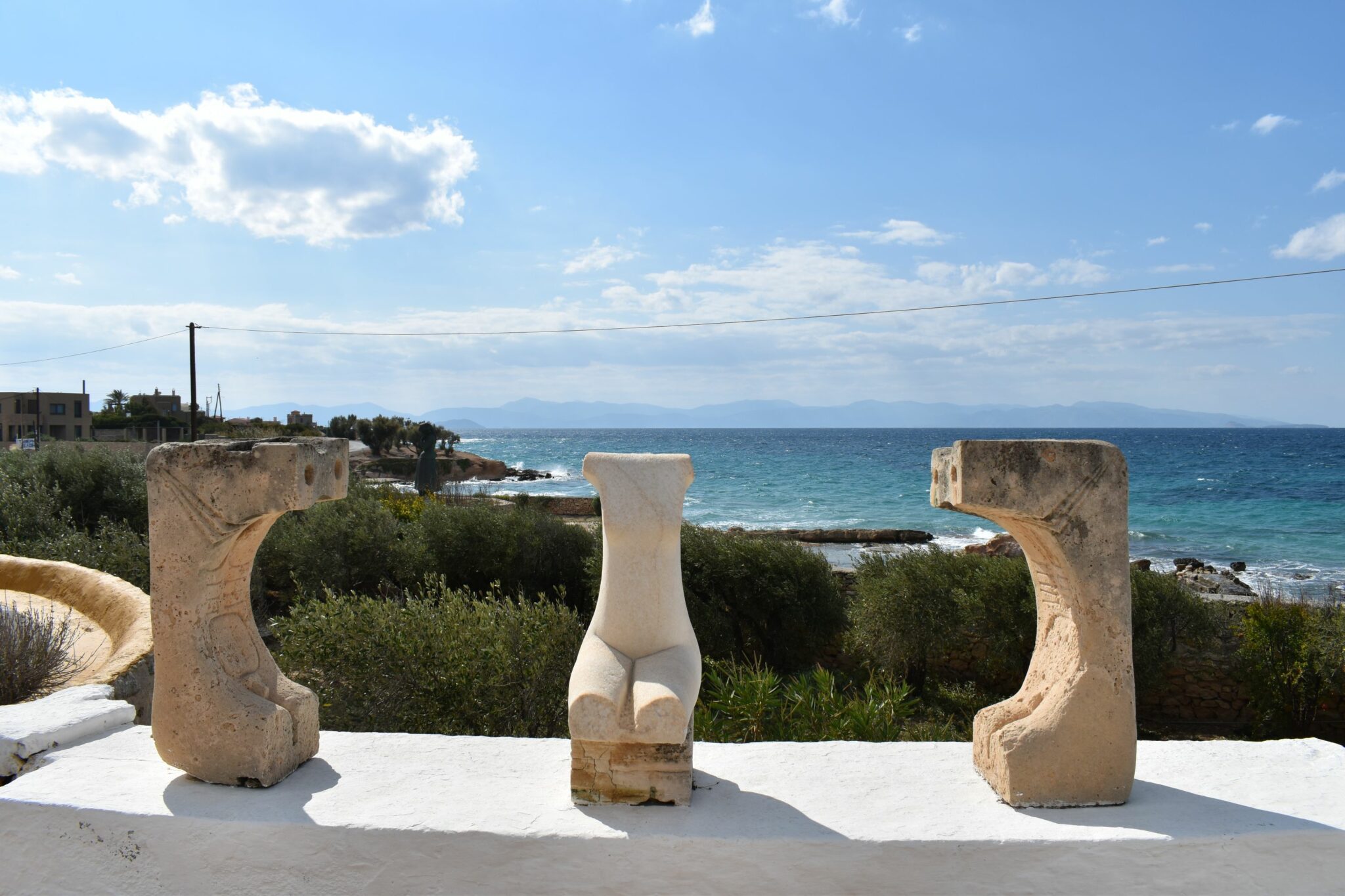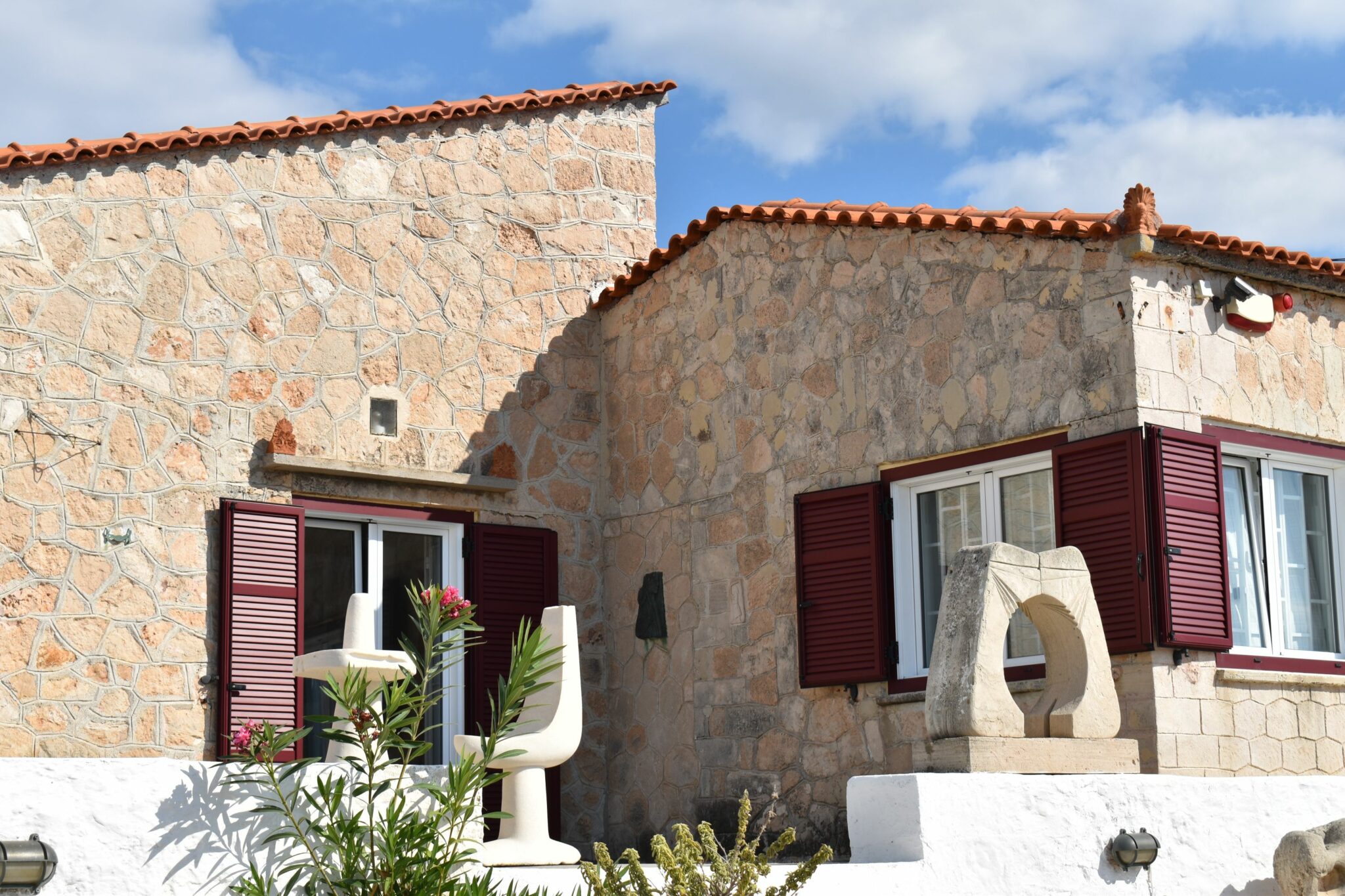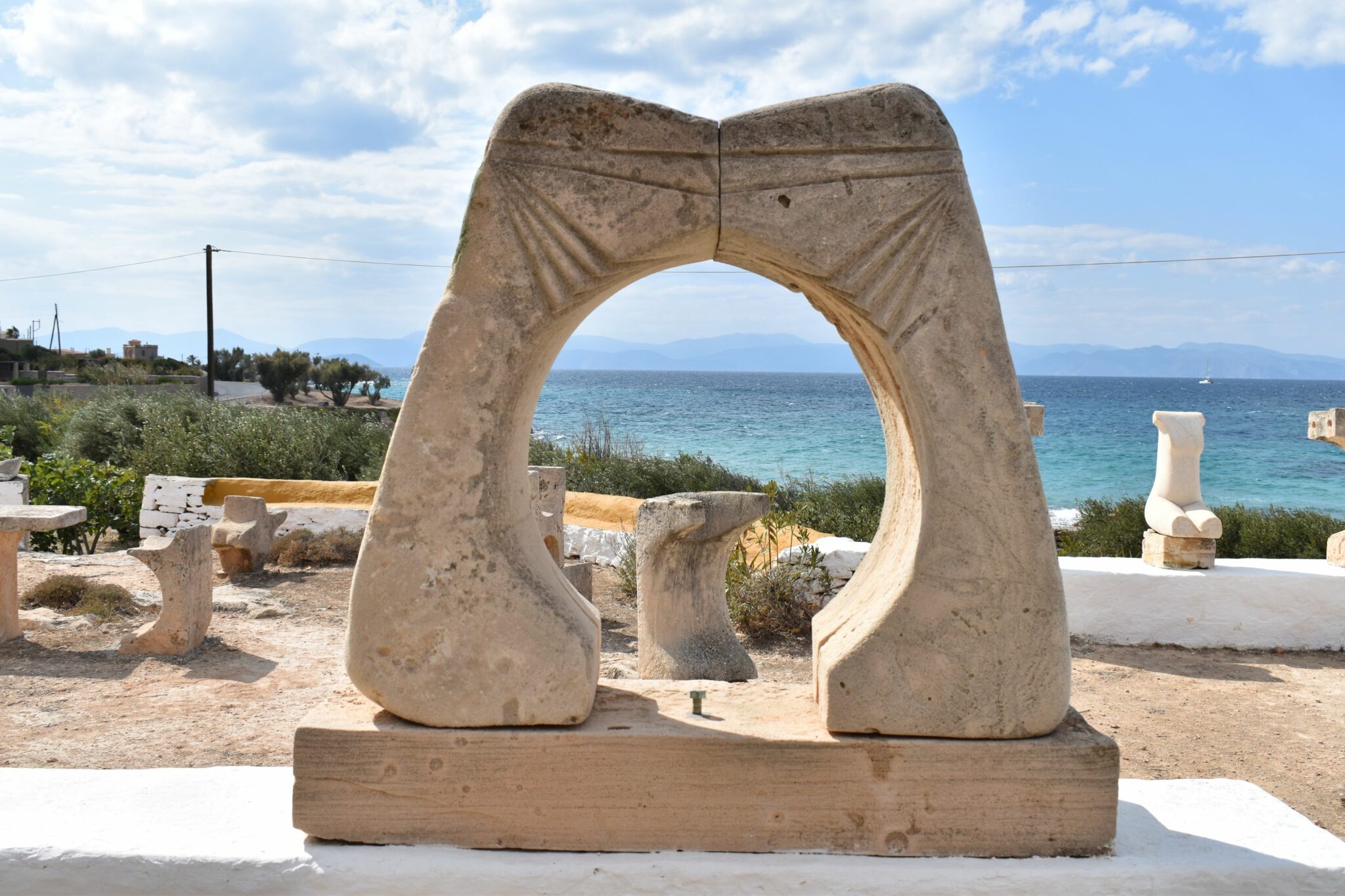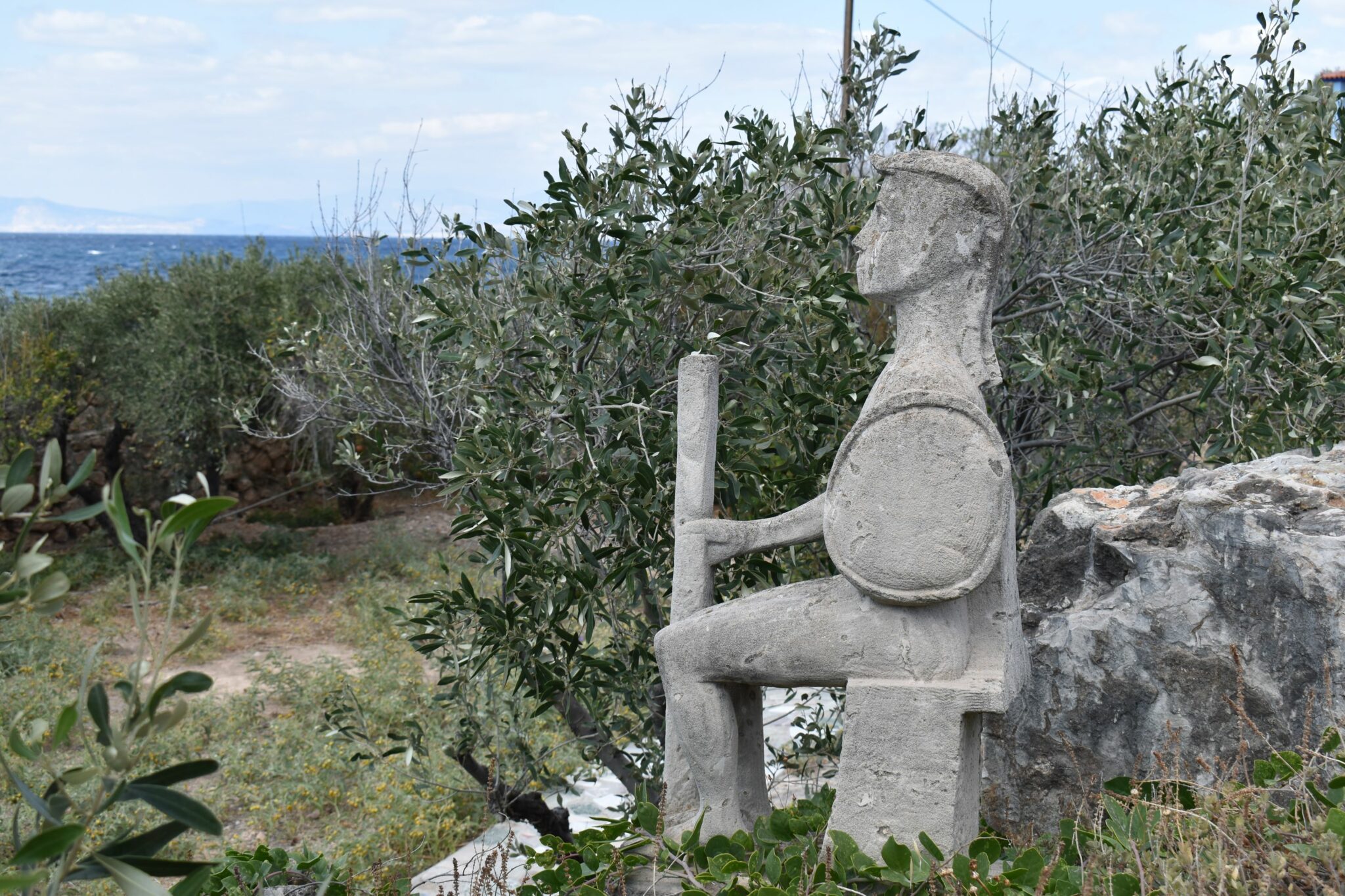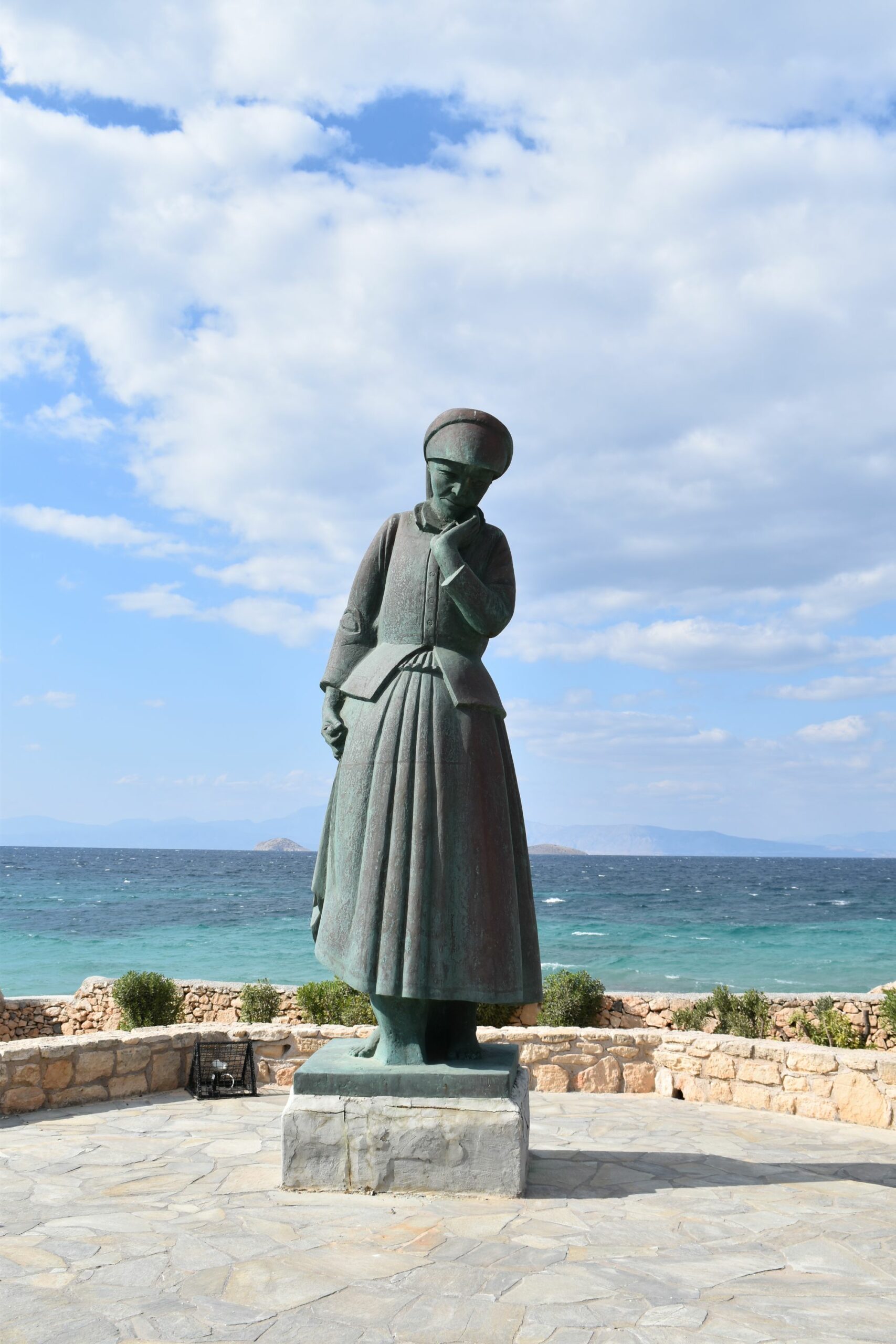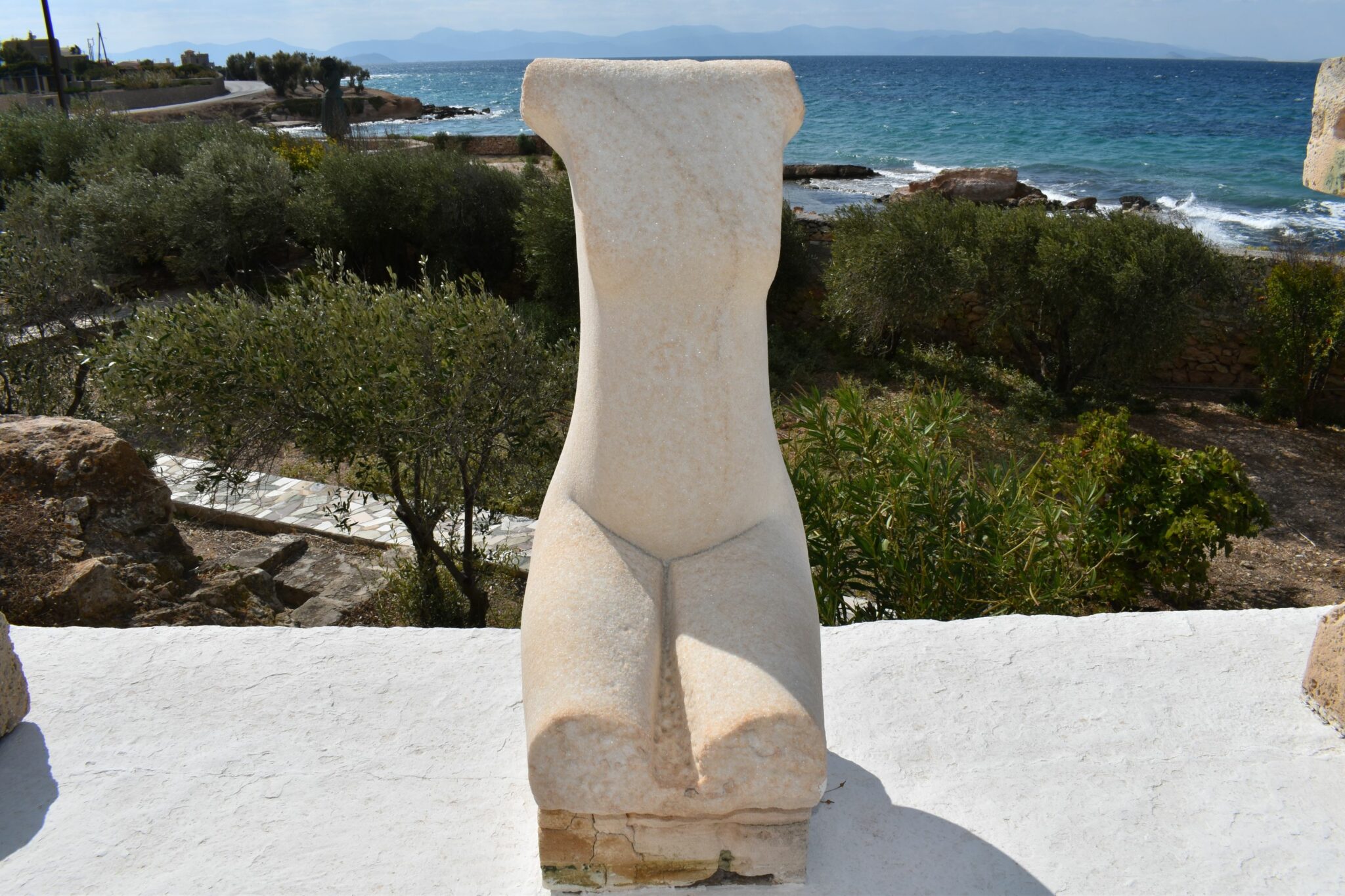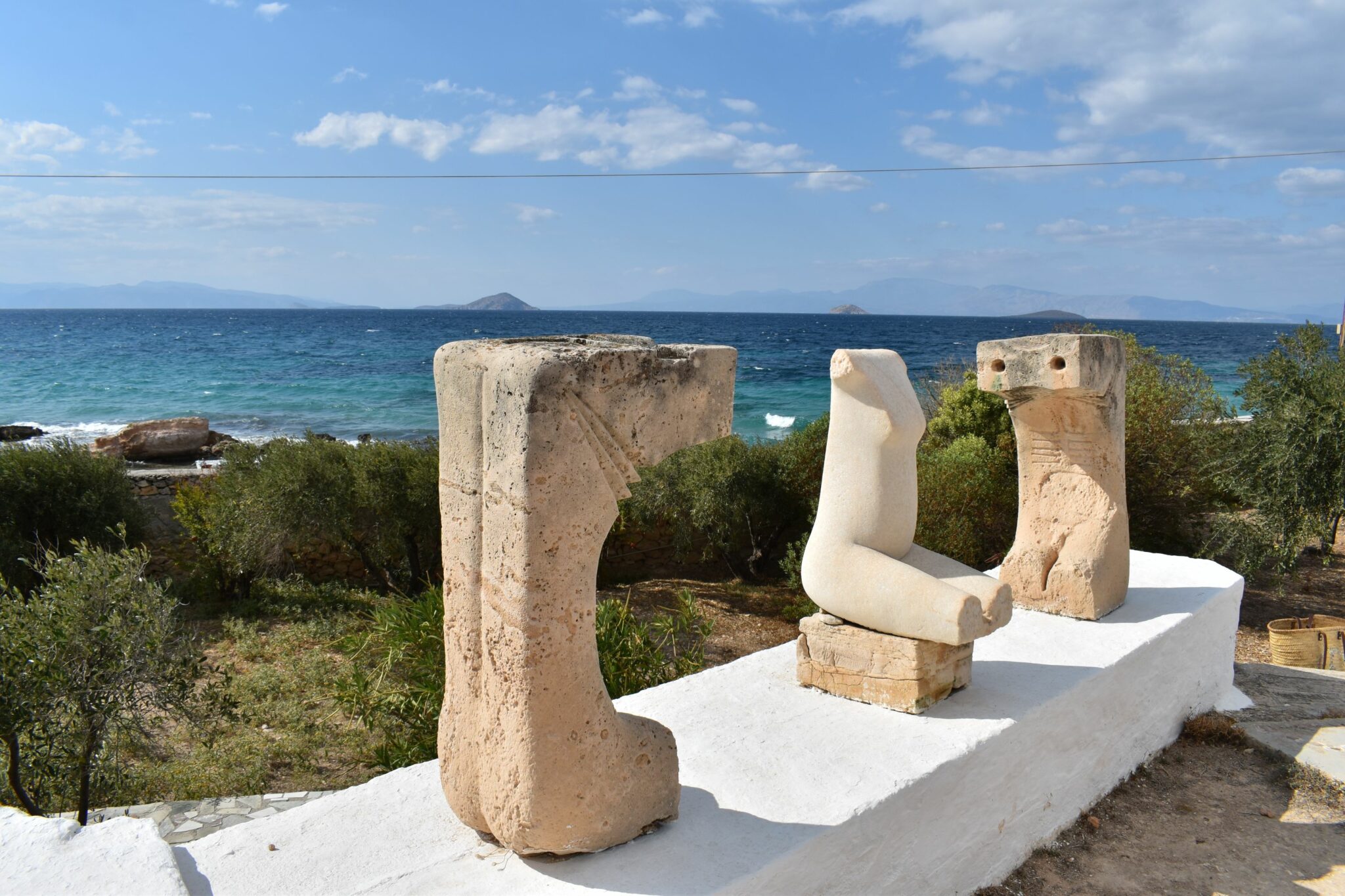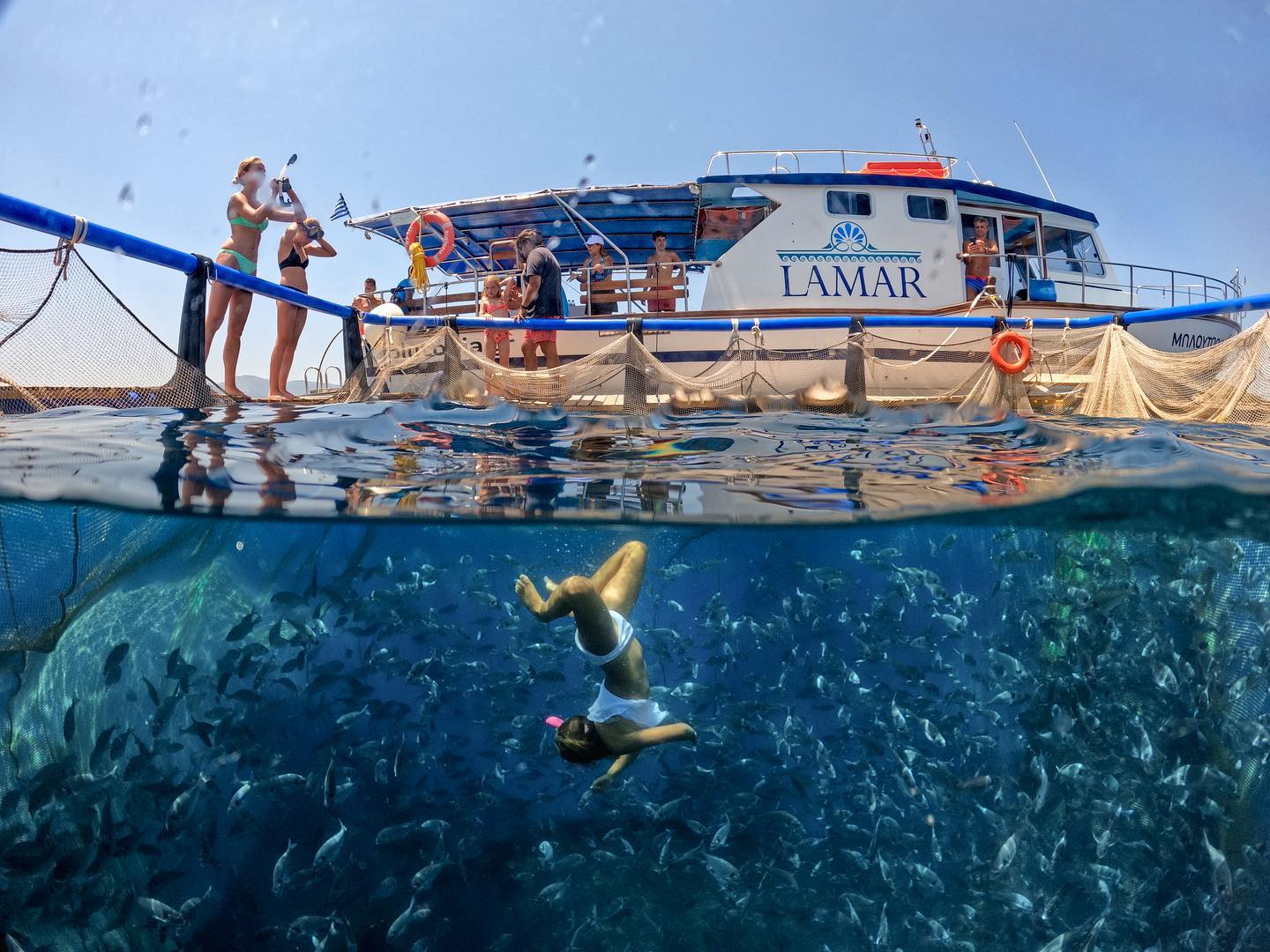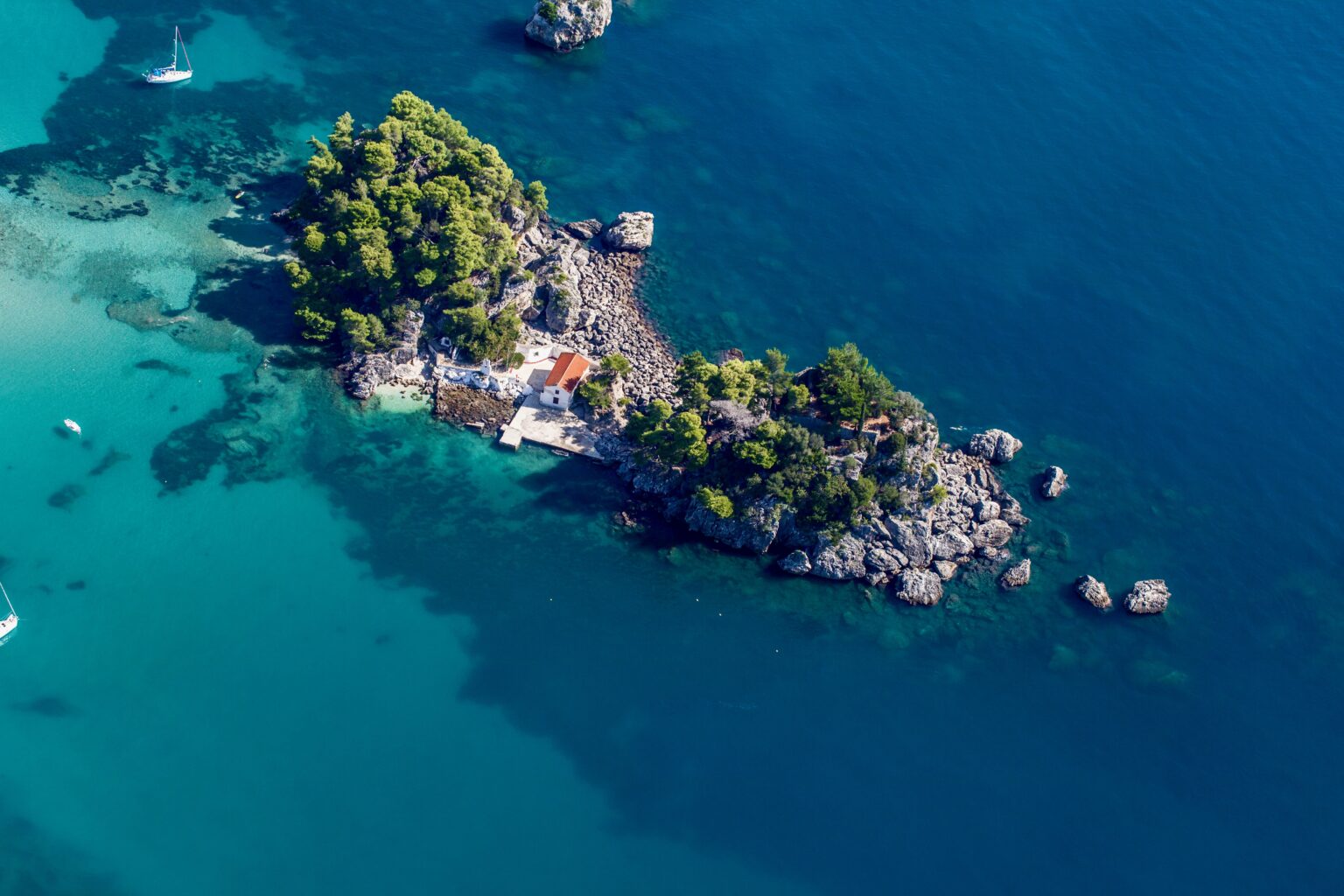A favourite and easily reached destination close to Athens, Aegina is always, for many reasons, a popular destination for short escapes. The island’s lovely main town displays distinct neoclassical architecture, its fishing villages are picturesque and filled with sandy shores offering calm, clean waters, and the local gastronomy is extremely interesting, Aegina pistachios being the trademark feature.
The island’s history is even more fascinating, an important chapter being the declaration of the city of Aegina as the capital of newly established modern Greece in 1826, greatly contributing to the island’s cultural development. Aegina’s flourishing literary and art scenes continued even when Nafplio was named the country’s new capital. Over the years, Aegina has drawn prominent figures, including Greek artists, choosing to live at this charming Argo-Saronic island.
They have included esteemed poets and writers, as well as the sculptor Christos Kapralos, lived and worked in Aegina, where he established a workshop at his home. The artist bequeathed this property, a lovely seaside house, to the Municipality of Aegina. It is now an exceptionally interesting museum that is part of the National Gallery. Museum visitors may see a large proportion of Kapralos’ work at the premises where it was actually created.
The sculptor, the son of peasants, was born in Agrinio, northwestern Greece, in 1909. Courtesy of the financial support provided by wealthy neighbours, Kapralos was able to study at the Athens School of Fine Arts, before immediately furthering his studies, focused on sculpting, in Paris. When he returned to Greece, Kapralos lived in homeland Agrinio as well as Athens, before eventually moving to Aegina in 1963, establishing his studio on the island, where he worked until his death, in 1993.
As the artist often noted, he abandoned all European influences and focused on classicism after returning to Greece. Humans were always at the core of his work. “My work is based on my great love for human existence and this is what I try to express,” the artist would often explain.
His mother, not educated, was Kapralos’ biggest love and the most important figure in his life. The support and encouragement she offered was crucial both at the beginning and during the artist’s course. This explains why many of Kapralos’ works depict a motherly figure, as a universal, timeless symbol. At Plakakia, 3 km from Aegina’s main town, a large-dimensioned bronze statue depicting a “Mother” waiting for her sailor son to return, also serves to signal the museum’s location.
Situated across the other side of the street, the museum, comprised of six spaces that served as the artist’s home and studio, hosts some of Kapralos’ most important work, both sculptures and paintings. The garden space, offering an unobstructed view of the Argo-Saronic’s blue waters, is scattered with modernist sculptures by Kapralos, as well as multi-coloured mosaics created by the artist to decorate his yard. All six spaces remain unchanged. They host a significant number of works, including terracottas, engravings and ceramic art.
Kapralos was inspired to sculpt using marble, wood, clay, plaster, metal and Aegina’s local limestone, while his themes were drawn from ancient Greece, especially Cycladic figurines, warriors, heroes, Centaurs and the Olympian gods and goddesses. His approximately 500 large-scale works are exceptionally impressive. They include “Virgin Mary”, a wood and bronze sculpture, “Achilles and Hector”, a work from 1972 on wood, “The Crucifixion”, a 5-piece composition on wood, as well as three more works on wood, “Apollo”, “Nike” and “Alfeios River”, which were created between 1971 and 1972. The large scale of the works as well as Kapralos’ ability to shift from surrealism to futurism while, at the same time, maintaining his distinctive style, is impressive.
Kapralos’ dexterity as a painter, a discipline he turned to from 1982 onwards as a result of age-related difficulties when working with wood and plaster, is on show at a separate section of the museum. Seascapes, self-portraits and human figures dominate this section. The painting style carries Kapralos’ artistic traits. Once again, human existence is at the core of his work.
A separate building at the back of the garden houses a true masterpiece of modern Greek art, an ode to peace over war that is possibly the greatest work created by this artist. A frieze of monumental dimensions, 40 metres long and 1.10 metres high, it is titled “The Monument of the Battle of Pindos” and was created on Aegina limestone. It is a composition made up of seven entities covering the Nazi German invasion of Greece, and evolves from peace to war and back to peace again.
The frieze begins by depicting Greek village men with their wives, children and animals as they head for their fields. It is a joyful scene, symbolising peace. Its positivity is overturned in the second entity, depicting the declaration of war, as soldiers march and men are forced to leave behind villages and homes. The sense of alarm culminates in the frieze’s third entity, depicting a battle scene between Greek and Italian soldiers, while the ensuing fourth entity symbolises the end of war as soldiers reunite with their families. The fifth entity presents yet another harsh war-related image symbolising the years of occupation. People are shattered and struggle to survive. The Greek Resistance is the theme of the sixth entity, while the work is competed with end of war and reconciliation of the people, generating a sense of optimism through scenes of joy, human figures celebrating with song and dance.
Besides its monumental dimensions, the work, depicting a total of 124 figures, also impresses as a result of the artist’s ability to combine, so naturally and seamlessly, archaic with vernacular elements, through a minimalistic, modern perspective. This frieze, regarded as a landmark work in the course of modern Greek sculpting, is on permanent show at the peristyle of the Hellenic Parliament. The Aegina museum hosts a plaster copy made by the artist.
Ending your visit to the museum by viewing this monumental frieze, and, on the way out, seeing, once again, the imposing “Mother” statue, the artist’s first sculpture created on Aegina, highlights the immense talent of this artist, whose work, which has been exhibited at the 1962 Biennale in Canada, the USA and Brazil, is justifiably considered timeless.
Read also:
Corfu Museum of Asian Art: A cultural journey to the Far East



